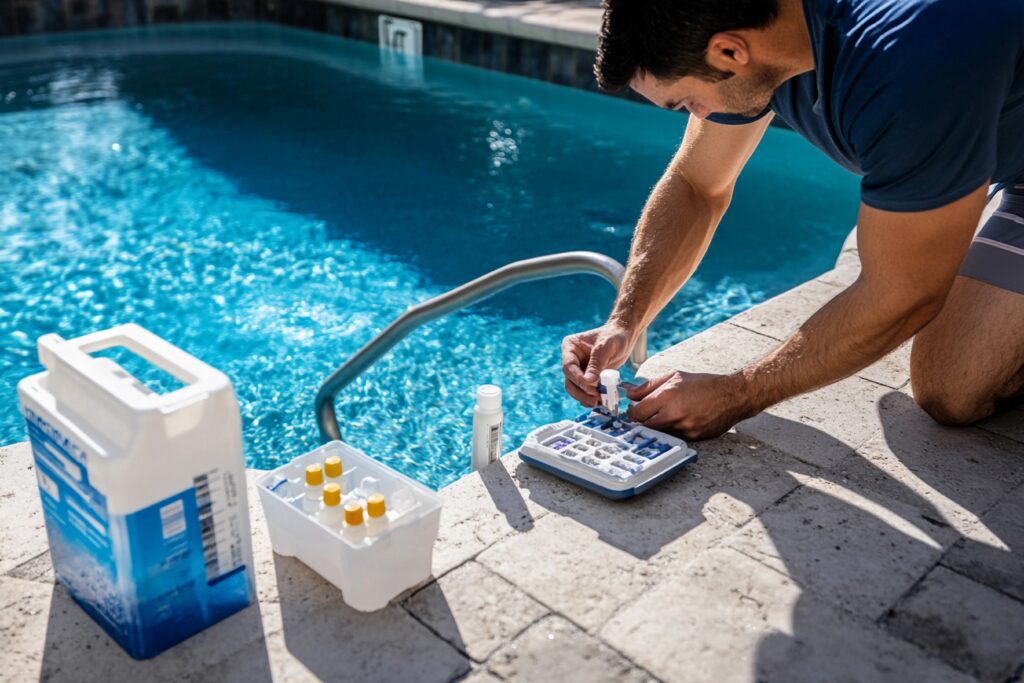Best Practices to Optimize Routes in the Field
Optimizing routes in the field is crucial for any service-oriented business, particularly for those in the pool service industry. Effective route management not only enhances operational efficiency but also significantly improves customer satisfaction. In this blog post, we will explore comprehensive strategies and best practices that pool service companies can implement to optimize their routes, reduce travel time, and boost overall productivity. By leveraging technology and adopting innovative strategies, your business can thrive in a competitive landscape.
In today’s fast-paced environment, businesses are constantly looking for ways to improve efficiency and reduce operational costs. This is especially true for field service companies, including those that provide pool maintenance and repair services. Route optimization plays a pivotal role in achieving these goals. By examining the importance of route optimization, the tools available, and practical applications, we aim to equip you with the knowledge needed to refine your field operations.
Throughout this article, we will cover key topics, including the significance of route optimization, effective tools for implementation, techniques for optimizing routes, and best practices to enhance service delivery. Let’s dive into the core aspects of optimizing routes in the field.
The Importance of Route Optimization
Route optimization is not merely about finding the quickest paths; it encompasses a broader scope of improving operational productivity, reducing costs, and enhancing customer experience. Efficient routing can lead to significant savings in fuel costs, time, and labor. A study from the Department of Transportation highlighted that optimizing delivery routes could save companies up to 20-30% in fuel costs alone.
Additionally, for pool service companies, timely arrivals enhance customer satisfaction, which is vital for retaining clients and building a positive reputation. Happy customers are more likely to recommend your services, leading to increased referrals and a stronger client base. Furthermore, optimizing routes minimizes wear and tear on vehicles, extending their lifespan and reducing maintenance costs.
Tools and Technology for Route Optimization
To effectively optimize routes, leveraging technology is essential. There are various software solutions and mobile applications designed to assist businesses in managing their field operations efficiently. For pool service companies, investing in a reliable pool service software like [EZ Pool Biller](https://ezpoolbiller.com/) can streamline billing and route management simultaneously.
Route optimization software typically uses algorithms and real-time data to analyze various factors, such as traffic patterns, service locations, and appointment times. Some popular tools include Google Maps, Route4Me, and Waze. These platforms allow service providers to plan efficient routes, adjust for traffic delays, and even monitor driver behavior. Implementing these tools can drastically enhance the efficiency of your field operations.
Techniques for Optimizing Routes
Employing effective techniques for route optimization can yield significant benefits. One proven method is clustering, which involves grouping service locations that are in close proximity to each other. This approach reduces travel time between appointments and helps technicians complete more jobs within a day.
Another technique is time-window routing, where appointments are scheduled based on customer availability. By prioritizing time-sensitive jobs, service companies can ensure that they meet their clients’ needs while maximizing operational efficiency.
Additionally, consider implementing dynamic routing, which allows for real-time adjustments based on current traffic conditions or last-minute appointment changes. This flexibility ensures that technicians can adapt to unexpected situations and maintain optimal service levels.
Best Practices for Enhanced Route Optimization
To fully leverage route optimization, pool service companies should adopt several best practices. Firstly, regularly review and analyze route performance data to identify areas for improvement. Keeping track of key performance indicators (KPIs) such as travel time, fuel consumption, and customer satisfaction can provide insights into your operational efficiency.
Secondly, invest in training your technicians on the best practices for route management. Ensuring that your team understands the importance of following optimized routes can significantly improve adherence to the planned schedules. Empowering your employees with knowledge about utilizing mobile apps or software effectively enhances overall productivity.
Moreover, maintain open communication with your clients regarding appointment times and any potential delays. Transparency builds trust and helps manage customer expectations, leading to greater satisfaction even in cases where issues arise.
Adopting Automated Billing Systems
In conjunction with route optimization, utilizing automated billing systems like [EZ Pool Biller](https://ezpoolbiller.com/) can further streamline operations. Automated billing not only alleviates administrative burdens but also ensures accurate invoicing based on the services performed during each appointment. This integration allows technicians to focus more on their core tasks while maintaining precise financial records.
Moreover, with features such as recurring billing, pool service businesses can ensure consistent cash flow by setting up automated payment schedules for regular clients. This feature reduces the need for follow-ups, allowing your team to concentrate on providing excellent service instead of chasing payments.
Visual Route Planning
Utilizing visual route planning tools can significantly enhance your approach to route optimization. Visual aids allow service managers to see routes in a geographical context, making it easier to identify clusters of jobs or potential problem areas. This method not only improves understanding but also aids in strategic planning for future appointments.
Furthermore, visual route planning can assist in evaluating the efficiency of current routes. By examining past routes on a map, service managers can identify trends, such as recurring traffic issues or inefficient paths, enabling them to make informed adjustments for future trips.
Continuous Improvement in Route Management
Effective route optimization is not a one-time effort; it requires ongoing evaluation and refinement. Regularly assess your route performance metrics and adjust strategies accordingly. Encourage feedback from technicians about the routes they take and any challenges they face, as this can provide valuable insights for further improvements.
Additionally, keeping an eye on emerging technologies and trends in route optimization can help your pool service company stay ahead of the competition. As the field service landscape evolves, embracing innovative solutions will enhance your ability to serve customers efficiently and effectively.
Conclusion
In conclusion, optimizing routes in the field is a critical aspect of operating a successful pool service business. By implementing best practices, leveraging technology, and continuously evaluating your processes, you can improve efficiency, reduce costs, and enhance customer satisfaction. As you integrate tools like [EZ Pool Biller](https://ezpoolbiller.com/) into your operations, you’ll find that managing your services becomes smoother and more efficient.
Route optimization is not merely about saving time and money; it is about providing exceptional service to your clients, building trust, and fostering long-term relationships. Start incorporating these strategies today, and witness the positive impact on your business operations and client satisfaction.




